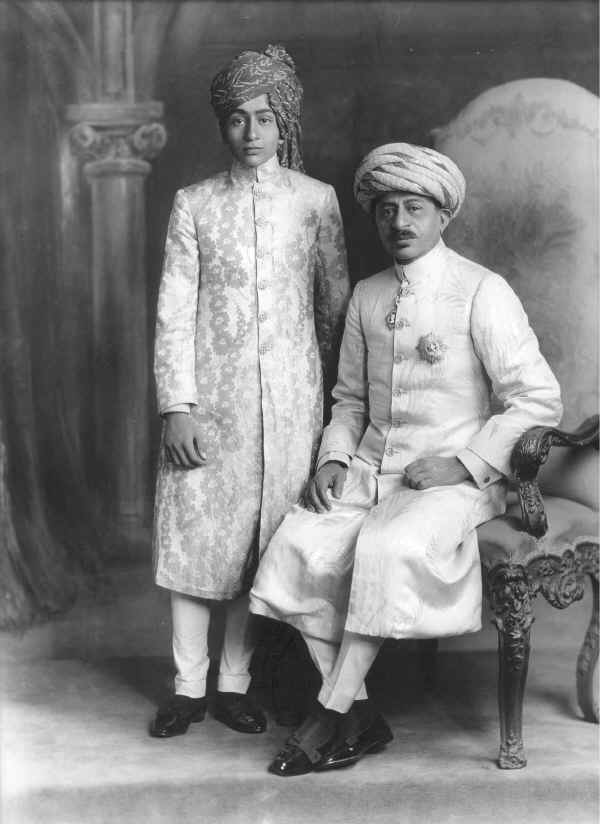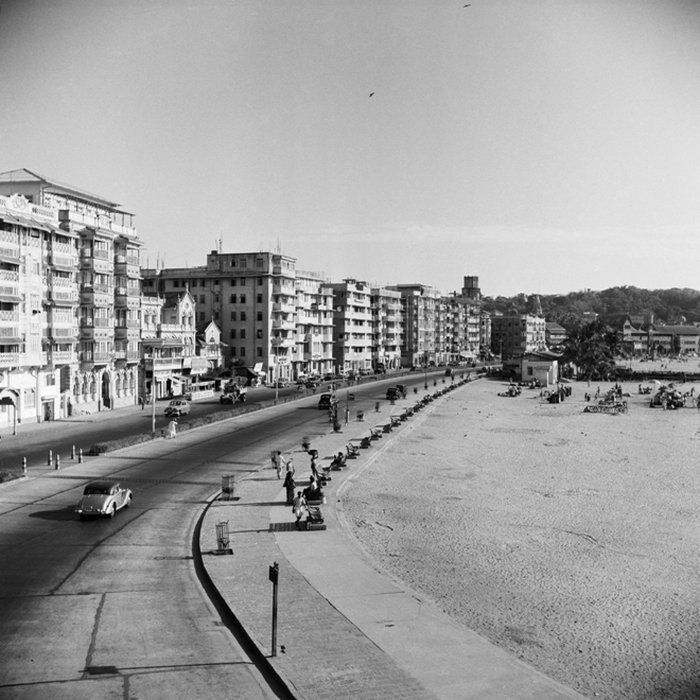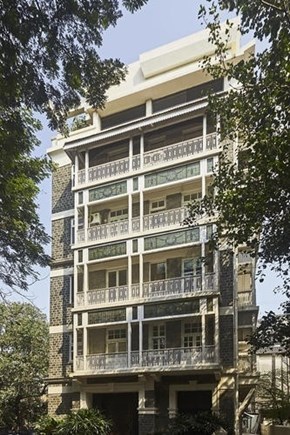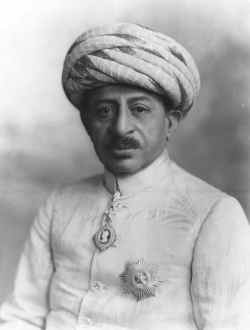Princely Properties of Bombay - Morvi
Written by : Amita Roy
Dated: August 07,2018
Share

Thakore Shib of Morvi or Morbi Lakhdhirji Waghji seated with standing son Mahendrasinhji Lakhdhirji by his side.

Vintage photo of Marine Drive part of Queens Necklace / Wiki
‘Queen’s Necklace’, the beautiful aesthetically made concrete shore line stretching from Marine Drive in Colaba in south Bombay towards Worli, by the British, is the main identity of BOMBAY and later Mumbai, for the world. But what many don’t know is that this entire stretch has many hidden gems, stories of uniform simplicity where prince and the pauper were leveled.
Bombay was one of the three major British Presidencies, apart from Bengal and Madras. But the sea also made Bombay highly cosmopolitan. Anywhere in the world, any place located by the sea has a flourishing business if it has a flourishing port. The more flourishing is the port, the richer is the city. This also brought a gamut of mixed population comprising from different parts of India and the globe due to the attraction towards the wealth.
The wealth – of Bombay, though is mostly created by the Parsees followed by Gujratis, but it was another old wealth cluster who owned a major chunk of residential and non residential immovable assets, in proper Bombay town which we know today as south Bombay stretching from Colaba to Worli and Bombay Suburban District which starts from Bandra and beyond northwards till Thane District starts. This cluster is none other than the Indian princely states who controlled 1/3rd of Indian Subcontinent physically and politically. The 565 princely states used to spend their leisure time in Bombay, during winters, enjoying garden parties, polo matches, or strolling by the Apollo Bunder where today stands Gateway of India. Many of these princely states, mostly from north, west , central and southern part of India invested in Bombay in the form of residential, and non residential immovable properties.
Now these investment made by the princely states were of again two type – the ones invested by the State or the Durbar itself; and that by the Ruler or the members of the royal families themselves. And most important of all, whether the investment is private or by the Durbar, every princely state had to take permission and consent from the British Govt. The ruler may be the head of state in his principality but when he is investing in a place under the British Govt, he is a tax paying subject under the British Govt. This particular change of status was always made clear to the royal families before they applied for any consent to invest in any new property.
Who were the major investors?! Who were these royal families?!
.jpg)
Thakore Sahib of Morvi Mahendrasinhji Lakhdhirsinhji after whom Watson Hotel was named Mahendra Mansions.
Well, there were many but today we start these series from Morvi. Morvi was a small erstwhile 11 gun salute princely state from Kathiawada, Saurashtra in western Gujrat who descended from Jadeja Rajputs of Rajasthan. The Thakore Sahib of Morvi had invested in residential and non residential immovable properties in Bombay directly under Morvi Durbar or indirectly or Benaami or through Universal Trading Company.
The properties owned by the Morvi Durbar which stood in the name of Azam Bhanji Kanji were –
1. HASHMET MAHAL, situated on the Chowpatty sea face in present day south Bombay. Present whereabouts unknown.
2. Plot of land situated on the corner of Mathews and Queens Road.
.jpg)
Watson Hotel, now Esplanade Mansions in Churchgate in 19th century / Wiki
3. WATSON HOTEL, known as Mahendra Mansion, bought by Thakore Saheb of Morvi in 1930 and renamed it after his son, Mahendra Sinhji Lakhdhirji which was later sold to the Tata Sons who renamed it as Esplanade Mansions, again resold now to a private individual. Watson Hotel was the most fashionable address in Bombay till Taj Palace Hotel came up by JRD Tata.
Morvi Durbar was also the largest stake holder in Universal Trading Company. The company owned in it’s name –

Postcard view of Waterloo Mansions in Colaba Fort Area / Wiki
1. Waterloo Mansions situated on the Esplanade Road,

Jiji House on Ravelin Street in Fort, Colaba after restoration / Ebuild
2. Jiji House, Raveline Street, Fort, presently restored and a commercial building.
3. A house near Thakurdwar in Girgaum
4. BEACH VIEW situated in Mahim.

Thakore Sahib of Morvi Lakhdhirsinhji who wanted to sell the properties. / Lafayette
The Thakore Sahib of Morvi wanted to keep BEACH VIEW as his only residential property and tried to sell of the rest but he was unsuccessful in selling off the cache in 1939.
Beside, all these, Universal Trading Company owned –
1. Agricultural land and residential houses in today’s Manpada area in Thane;
2. Land in village of Poisar, Kandivali, north Mumbai.
The valuation of the following properties were almost Rs 50 lakhs as of 1938 –
1. Mahendra Mansions - Rs 15,60,786
2. Waterloo Mansions - Rs 23,95,033
3. Jiji House - Rs 6,08,968
4. Manpada land - Rs 2,52,144
5. Poisar Property - Rs 1.23,000
Rs 49,39,931/-
The status of residential, non residential investments in terms of immovable assets by Morvi changed further in 1947. This is the investment by Morvi Durbar as of 1938.
Coming to Benaami property, in British Presidencies, princely states used to invest in Benaami properties which were not acquired by the ruler in his own name with the consent of the British Govt. Mostly, they were purchased in the name of the trusted aides of the ruler.
The series continues……
